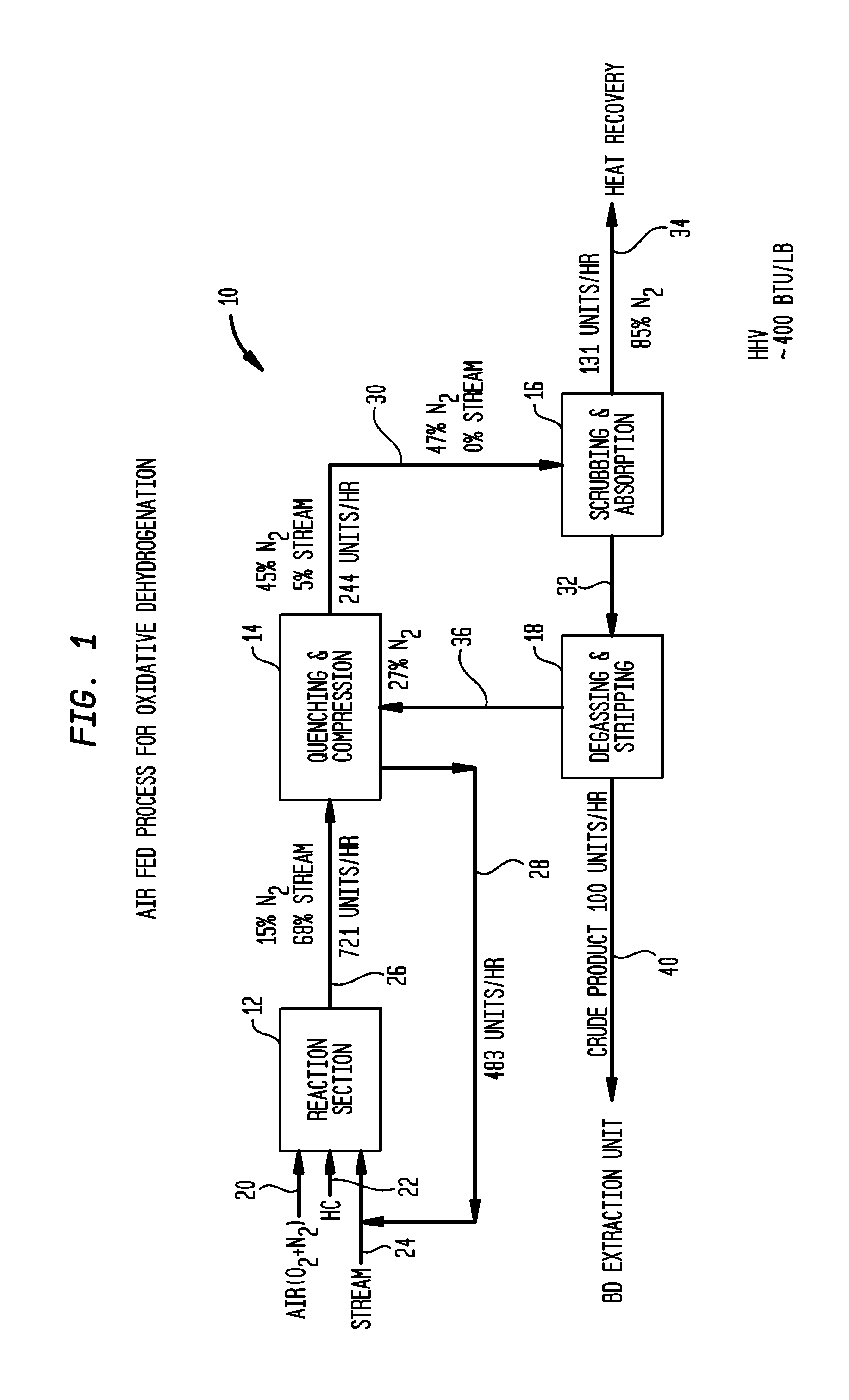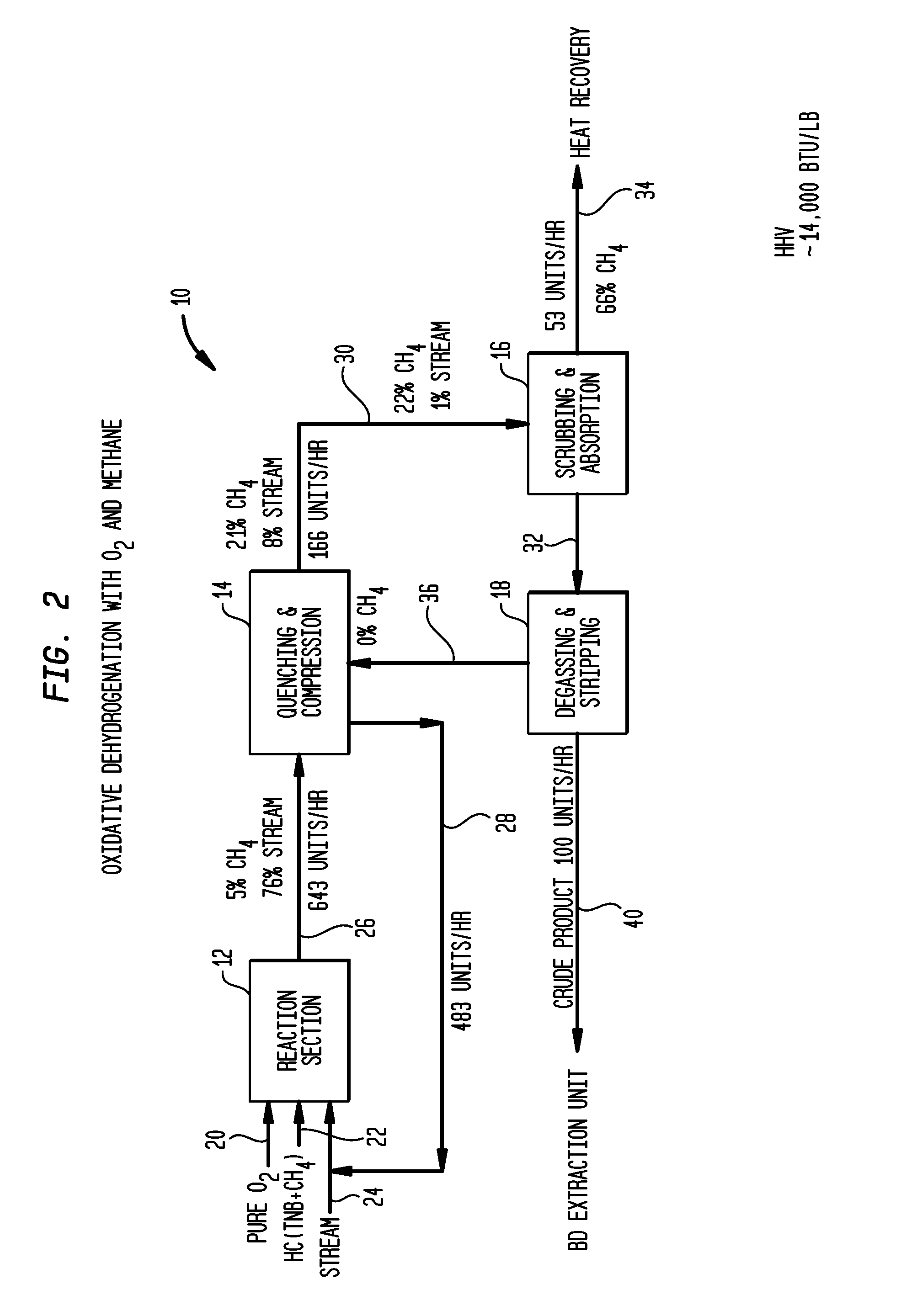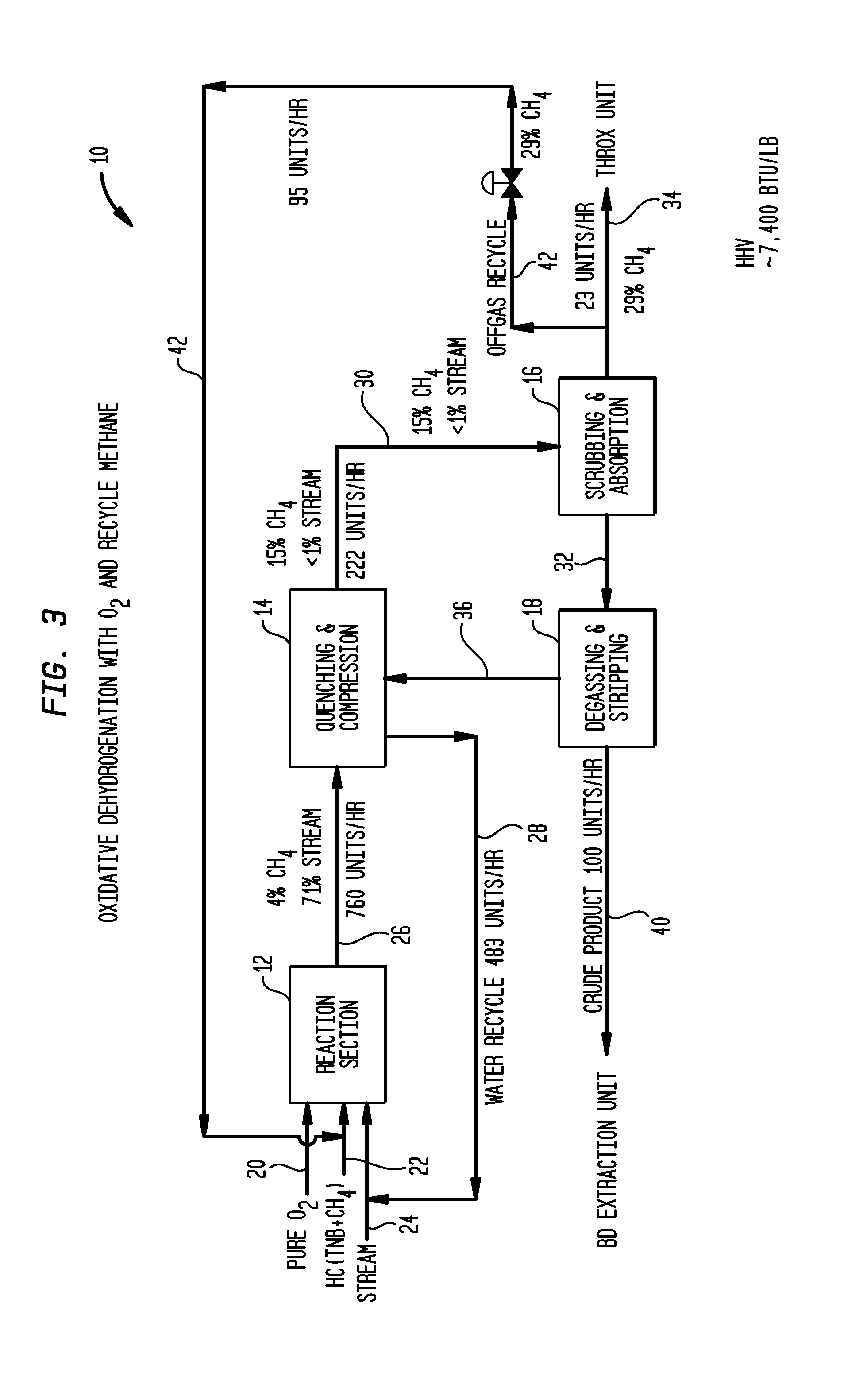Oxidative Dehydrogenation Process With Hydrocarbon Moderator Gas and Reduced Nitrogen Feed
a technology of oxidative dehydrogenation and moderator gas, which is applied in the direction of hydrocarbon by hydrogenation, chemistry apparatus and processes, organic chemistry, etc., can solve the problems of increasing the cost of operation, reducing the efficiency of oxidative dehydrogenation process, so as to reduce the size of equipment and reduce the cost of both utility and capital costs , the effect of increasing the heating valu
- Summary
- Abstract
- Description
- Claims
- Application Information
AI Technical Summary
Benefits of technology
Problems solved by technology
Method used
Image
Examples
Embodiment Construction
[0028]The invention is described in detail below in connection with the Figures for purposes of illustration, only. The invention is defined in the appended claims. Terminology used throughout the specification and claims herein are given their ordinary meanings, unless a more specific definition appears herein.
[0029]%, percent and like terminology means weight percent unless otherwise specifically indicated.
[0030]In general, the process of this invention can be applied to the dehydrogenation of a wide variety of organic compounds suitable as dehydrogenation reactants. Such compounds normally will contain from 2 to 20 carbon atoms, at least one
[0031]grouping, a boiling point below about 350° C., and may contain other elements, in addition to carbon and hydrogen, such as oxygen, halogens, nitrogen and sulfur. Preferred are compounds having 2 to 12 carbon atoms, and especially preferred, are compounds of 3 to 8 carbon atoms. Hydrocarbons of the above described carbon content form a pr...
PUM
| Property | Measurement | Unit |
|---|---|---|
| molar ratio | aaaaa | aaaaa |
| molar ratio | aaaaa | aaaaa |
| temperature | aaaaa | aaaaa |
Abstract
Description
Claims
Application Information
 Login to View More
Login to View More - R&D
- Intellectual Property
- Life Sciences
- Materials
- Tech Scout
- Unparalleled Data Quality
- Higher Quality Content
- 60% Fewer Hallucinations
Browse by: Latest US Patents, China's latest patents, Technical Efficacy Thesaurus, Application Domain, Technology Topic, Popular Technical Reports.
© 2025 PatSnap. All rights reserved.Legal|Privacy policy|Modern Slavery Act Transparency Statement|Sitemap|About US| Contact US: help@patsnap.com



